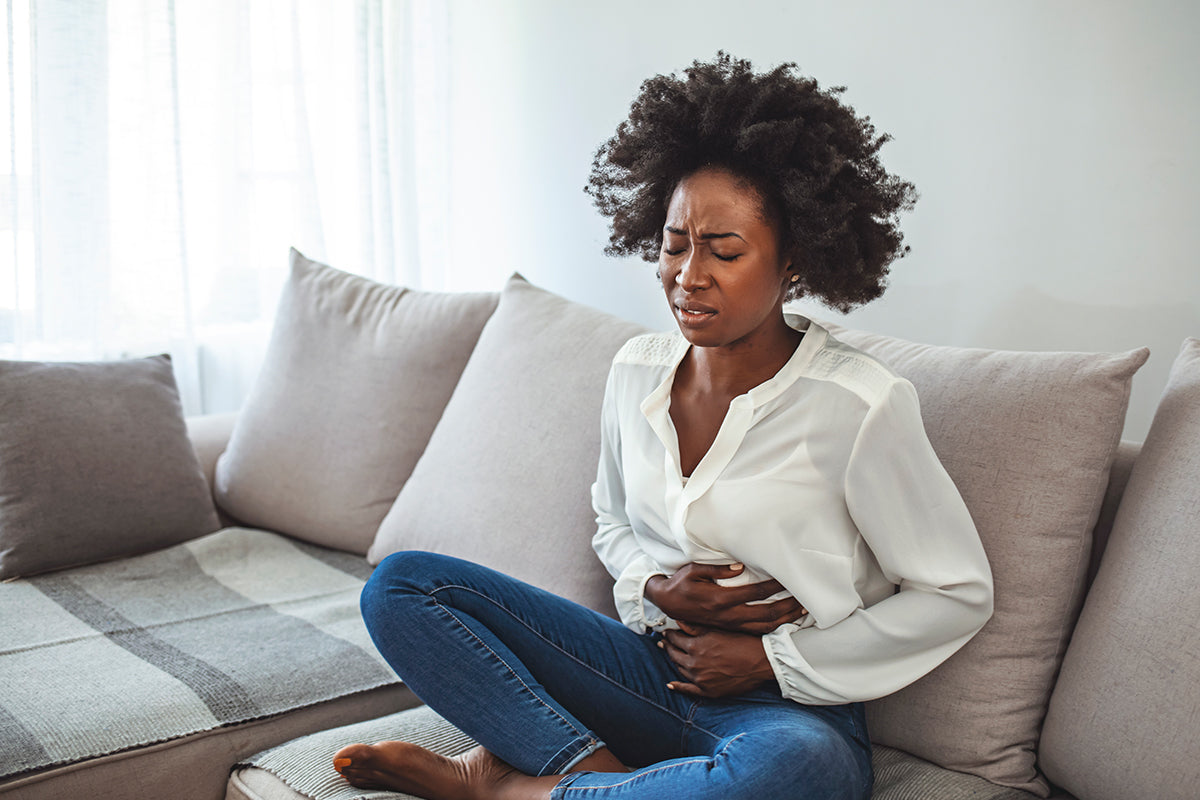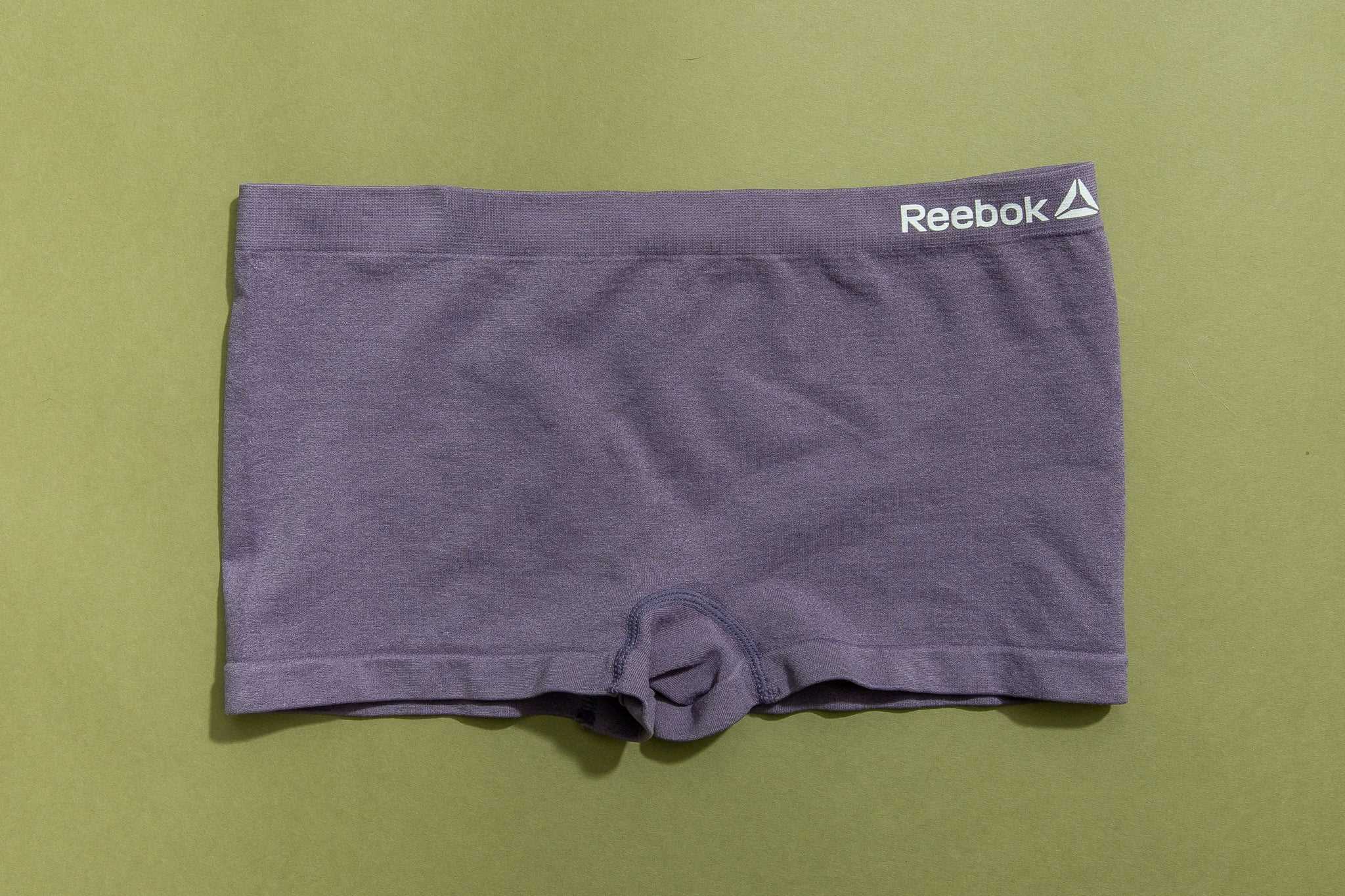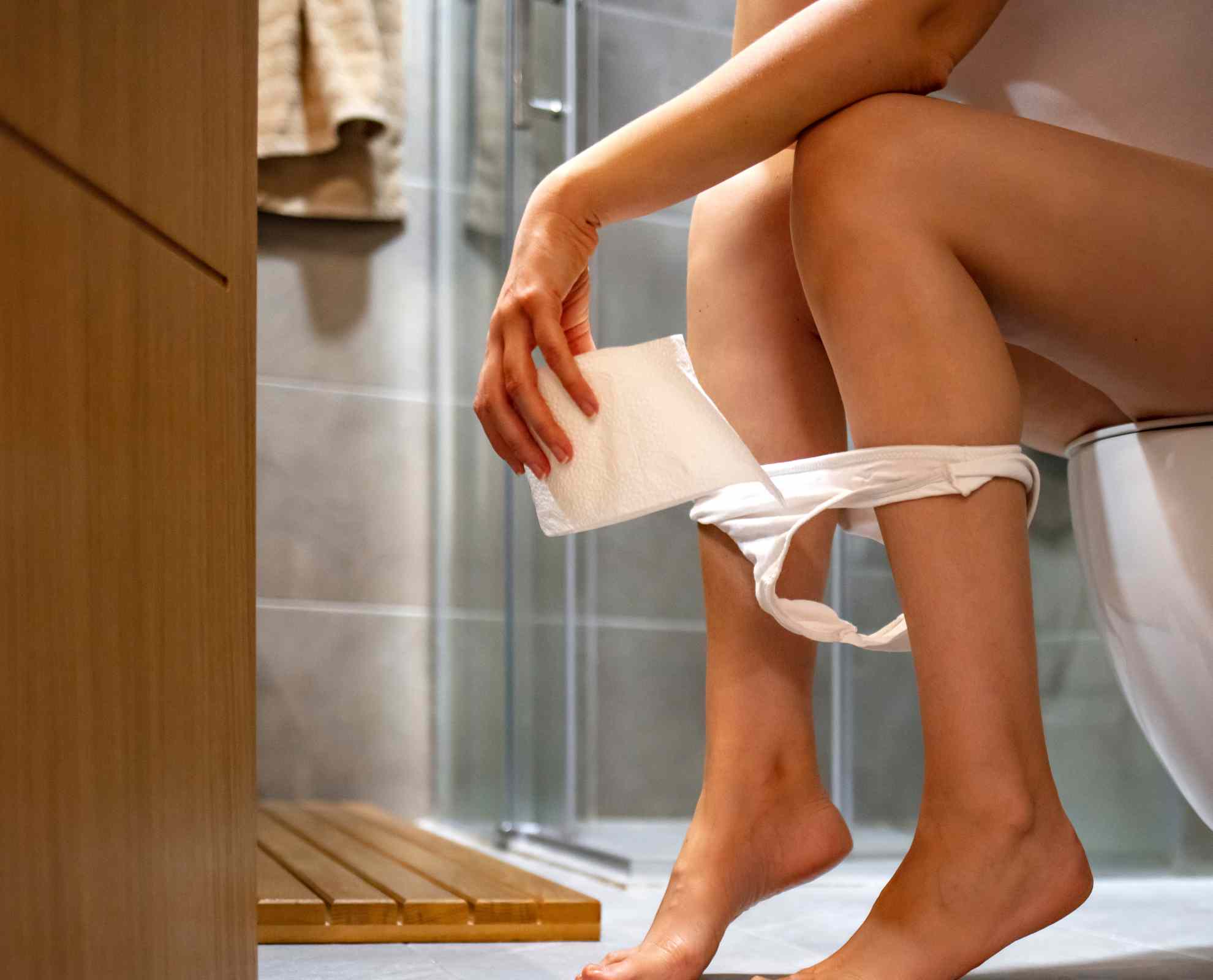

FAQs
Why Do I Have Poop Stains In My Underwear
Modified: September 23, 2023
Discover the answers to your general questions about why you may be experiencing poop stains in your underwear. Find helpful tips and solutions to prevent and manage this issue.
(Many of the links in this article redirect to a specific reviewed product. Your purchase of these products through affiliate links helps to generate commission for Under-tec.com, at no extra cost. Learn more)
Table of Contents
- Introduction
- Understanding stool and its composition
- Factors contributing to poop stains in underwear
- Dietary factors
- Digestive disorders and medical conditions
- Inadequate hygiene practices
- Effects of certain medications
- Tips for preventing poop stains in underwear
- Proper cleaning and stain removal techniques
- When to seek medical advice
- Conclusion
Introduction
Have you ever wondered why you sometimes find poop stains in your underwear? It’s a common concern that many people have experienced at some point. While it can be embarrassing, it’s important to understand that there can be various factors contributing to these stains. In this article, we will delve into the reasons behind poop stains in underwear and discuss preventive measures to help you maintain better hygiene.
Our bowel movements consist of waste materials, including undigested food, bacteria, and dead cells. The color, consistency, and odor of stool can vary depending on factors such as diet, hydration levels, and underlying health conditions. Sometimes, due to various reasons, bits of poop can end up in our underwear, leading to stains that can be difficult to remove.
While occasional poop stains may not be a cause for alarm, persistent stains can be indicative of underlying issues that require attention. It’s crucial to identify the possible causes and take appropriate measures to address them.
In the following sections, we will explore the different factors that can contribute to poop stains in underwear. These factors can range from dietary choices to specific medical conditions and inadequate hygiene practices. By understanding these factors, you can make the necessary adjustments in your lifestyle and maintain better cleanliness.
Understanding stool and its composition
Before we dive into the reasons behind poop stains in underwear, it’s important to have a basic understanding of stool and its composition. Stool, also known as feces, is the waste product that is eliminated from our body through the rectum and anus.
The composition of stool can vary, but it typically consists of water, undigested food particles, bacteria, electrolytes, and various waste materials. The color and consistency of stool can be influenced by factors such as diet, hydration levels, and the presence of certain medical conditions.
Normal stool is generally brown in color due to the presence of bilirubin, a yellowish-brown pigment formed as a byproduct of the breakdown of red blood cells in the liver. The presence of other colors, such as green or yellow, can indicate differences in the transit time of food through the digestive system or the presence of substances that affect pigmentation.
The consistency of stool can range from loose and watery to firm and well-formed. Factors such as the amount of fiber in the diet, the balance of gut bacteria, and the efficiency of digestion and absorption can influence the consistency of stool.
Understanding the normal characteristics of stool can help us identify when something is amiss. If you consistently notice changes in the color, consistency, or odor of your stool, it’s important to consult with a healthcare professional to rule out any underlying health issues.
Now that we have an understanding of stool and its composition, let’s explore the various factors that can contribute to poop stains in underwear.
Factors contributing to poop stains in underwear
There are several factors that can contribute to poop stains in underwear. These factors can vary from dietary choices to specific medical conditions and inadequate hygiene practices. Understanding these factors can help you take the necessary steps to prevent and manage poop stains effectively.
1. Dietary factors: The foods we eat can have a direct impact on our bowel movements and the color and consistency of our stool. A diet low in fiber and high in processed foods can lead to constipation, making it more likely for small bits of stool to remain in the rectum. This can lead to accidental leaks and stains in underwear. Additionally, certain foods and beverages, such as beets or artificial food coloring, can cause temporary changes in stool color, potentially resulting in stains.
2. Digestive disorders and medical conditions: Various digestive disorders and medical conditions can affect the digestive process and contribute to poop stains. Conditions like irritable bowel syndrome (IBS), inflammatory bowel disease (IBD), and malabsorption disorders can cause changes in stool consistency, frequent bowel movements, and urgency, increasing the chances of accidents and stains in underwear.
3. Inadequate hygiene practices: Poor hygiene practices, such as inadequate wiping after bowel movements, can leave traces of stool on the skin around the anus. As a result, these residual fecal matter can transfer to underwear, causing stains. It’s important to ensure proper cleaning after using the bathroom to minimize the risk of stains.
4. Effects of certain medications: Some medications, such as antibiotics or certain laxatives, can alter the composition and consistency of stool. These changes can increase the likelihood of accidental stains in underwear. If you notice changes in your bowel movements or the presence of stains after starting a new medication, consult with your healthcare provider for further guidance.
By understanding these factors, you can begin to identify potential causes for the poop stains in your underwear. In the next section, we will discuss some preventive measures and tips to help you avoid or minimize the occurrence of poop stains.
Dietary factors
The food we consume plays a crucial role in our digestive health and can have a significant impact on the occurrence of poop stains in underwear. Let’s delve into some dietary factors that can contribute to these stains and explore ways to mitigate them.
1. Low fiber diet: A diet low in fiber can lead to constipation, making it more challenging for stool to pass through the digestive system. This can result in incomplete evacuation and the presence of residual stool in the rectum. Eventually, these remnants can leak out and stain underwear. Incorporating fiber-rich foods into your diet, such as fruits, vegetables, whole grains, and legumes, can help promote regularity and reduce the chances of stains.
2. High fat and processed foods: Consuming a diet rich in high-fat and processed foods can contribute to changes in stool consistency. These foods can slow down digestion and lead to firmer and harder stool, increasing the likelihood of stains. It’s best to focus on a balanced diet that includes lean proteins, healthy fats, and whole foods to maintain optimal digestive health.
3. Food coloring and additives: Certain foods and beverages containing artificial food coloring or additives can cause temporary changes in stool color, potentially resulting in stains. If you notice unusual colors in your stool after consuming products like sports drinks, candies, or processed snacks, it’s essential to be aware of the potential staining effect and take necessary precautions.
4. Hydration: Insufficient hydration can contribute to harder and drier stool, making it more difficult to pass through the intestines. This can increase the risk of constipation and stains. Ensuring an adequate intake of water throughout the day can help maintain healthy bowel movements and reduce the chances of poop stains in underwear.
5. Sensitivities and intolerances: Food sensitivities and intolerances can cause digestive symptoms such as bloating, diarrhea, or constipation, which may contribute to accidental leaks and stains. If you suspect that certain foods may be causing digestive issues, it may be helpful to keep a food diary and consult with a healthcare professional or registered dietitian to identify any potential triggers.
By being mindful of your dietary choices and incorporating fiber-rich foods, staying hydrated, and being aware of any food sensitivities, you can reduce the risk of poop stains in underwear. In the following section, we will discuss additional preventive measures to help minimize the occurrence of stains.
Digestive disorders and medical conditions
Various digestive disorders and medical conditions can affect the digestive process and contribute to the occurrence of poop stains in underwear. Let’s explore some of these conditions and discuss ways to manage and minimize the risk of stains.
1. Irritable bowel syndrome (IBS): IBS is a common digestive disorder that can cause abdominal pain, bloating, changes in bowel movements, and urgency. The unpredictable nature of bowel movements in individuals with IBS can increase the chances of accidental leaks and stains in underwear. Working with a healthcare professional to develop a personalized management plan, which may include dietary changes, stress management techniques, and medication, can help alleviate symptoms and reduce the risk of stains.
2. Inflammatory bowel disease (IBD): IBD, including conditions like Crohn’s disease and ulcerative colitis, can cause inflammation and damage to the digestive tract. Symptoms may include abdominal pain, diarrhea, rectal bleeding, and urgency. These symptoms, combined with changes in stool consistency, can lead to stains in underwear. Managing IBD typically involves a comprehensive treatment plan consisting of medication, lifestyle modifications, and regular monitoring by a gastroenterologist to minimize symptoms and reduce the risk of stains.
3. Malabsorption disorders: Malabsorption disorders, such as celiac disease or lactose intolerance, can interfere with the proper absorption of nutrients and lead to changes in bowel movements. Diarrhea, a common symptom in these conditions, can increase the chances of accidental leaks. Adhering to a strict gluten-free diet in the case of celiac disease or avoiding lactose-containing products in the case of lactose intolerance can help manage symptoms and reduce the risk of stains.
4. Pelvic floor dysfunction: Pelvic floor dysfunction refers to the impaired function of the muscles and connective tissues that support the pelvic organs. This can lead to difficulty in controlling bowel movements and result in episodes of fecal incontinence, leading to stained underwear. Pelvic floor exercises, also known as Kegel exercises, along with biofeedback therapy, can help strengthen the pelvic floor muscles and improve bowel control, reducing the risk of stains.
5. Certain medications: Some medications, such as laxatives or certain antibiotics, can affect bowel movements and contribute to the occurrence of stains. If you suspect that your medications are affecting your bowel movements or causing stains, it is essential to discuss this with your healthcare provider. They may be able to suggest alternative medications or advise on ways to manage any potential side effects.
By seeking proper medical guidance, following recommended treatment plans, and managing symptoms effectively, you can reduce the risk of poop stains in underwear associated with digestive disorders and medical conditions. In the next section, we will discuss strategies for maintaining proper hygiene to prevent and manage stains.
Inadequate hygiene practices
Inadequate hygiene practices can contribute to the occurrence of poop stains in underwear. Proper cleaning and hygiene after bowel movements are essential to minimize the risk of stains. Let’s explore some common hygiene practices that can help prevent and manage stains effectively.
1. Wiping technique: Using the correct wiping technique is crucial for maintaining cleanliness. After a bowel movement, it’s important to gently wipe from front to back, ensuring that you reach all areas around the anus. This helps prevent the transfer of fecal matter to the vaginal or urinary tract and reduces the chances of stains in underwear.
2. Use of moist wipes or bidets: Consider incorporating the use of moist wipes or a bidet into your cleansing routine. Moist wipes can provide a thorough cleaning and help remove any residual fecal matter effectively. Alternatively, a bidet can provide a gentle stream of water to cleanse the area, promoting better hygiene and reducing the risk of stains.
3. Cleaning the underwear promptly: If you do experience a stain, it’s important to clean the underwear promptly to prevent the stain from setting. Rinse the stain under cold water first to remove any excess fecal matter, then soak the affected area in a mixture of water and stain remover. Follow the instructions on the stain remover product and launder the underwear as soon as possible to ensure optimal stain removal.
4. Underwear choice: Opt for underwear made of breathable materials, such as cotton, as they allow better airflow and can help reduce moisture and odor. Additionally, ensure that your underwear fits properly to minimize the chances of leaks and stains. Ill-fitting or tight underwear can put pressure on the anal area and increase the risk of accidents.
5. Regular bathing or showering: Maintaining good overall hygiene by taking regular baths or showers is important for minimizing the risk of stains. Cleansing the anal area thoroughly with mild soap and warm water can help remove any residual fecal matter and maintain proper hygiene. Pay attention to drying the area completely to prevent moisture buildup, which can contribute to stains.
By implementing these hygiene practices into your routine, you can significantly reduce the chances of poop stains in underwear. It’s important to note that if you’re experiencing persistent or disruptive stains, despite following proper hygiene practices, it may be beneficial to consult with a healthcare professional for further evaluation and guidance.
Effects of certain medications
Some medications can have an impact on bowel movements and contribute to the occurrence of poop stains in underwear. Let’s explore how certain medications can affect stool consistency and discuss ways to manage and minimize the risk of stains.
1. Laxatives: Laxatives are commonly used to relieve constipation. However, certain types of laxatives can cause loose or watery stool, increasing the risk of accidental leaks and stains. If you are using laxatives and experiencing frequent stains, it may be helpful to discuss with your healthcare provider to explore alternative options or adjust the dosage to find the right balance for your bowel movements.
2. Antibiotics: Antibiotics are prescribed to treat various infections; however, they can disrupt the natural balance of gut bacteria. This disruption can lead to changes in bowel movements, such as diarrhea or loose stool, which can increase the likelihood of stains. If you notice changes in your bowel movements or experience staining after starting antibiotics, it’s essential to discuss this with your healthcare provider for further evaluation and to explore potential strategies, such as probiotics, to support gut health.
3. Antidiarrheal medications: Antidiarrheal medications help to slow down bowel movements and reduce stool frequency. While these medications can be beneficial for managing diarrhea, they can also lead to firmer stool, increasing the risk of stains. It’s important to use antidiarrheal medications as directed by a healthcare provider and to be aware of any changes in bowel movements or stool consistency that may warrant adjustments in dosage or alternative treatments.
4. Iron supplements: Iron supplements are often prescribed for individuals with iron deficiency. However, these supplements can cause changes in stool color, making it appear darker or tarry, potentially resulting in stains. If you notice persistent and significant changes in stool color after starting iron supplements, it’s advisable to consult with your healthcare provider for further evaluation and management.
5. Other medications: Certain other medications, such as those used to manage gastrointestinal conditions like acid reflux or inflammatory bowel disease, may have gastrointestinal side effects that can affect bowel movements and increase the likelihood of stains. It’s important to discuss these side effects with your healthcare provider and explore strategies to manage them effectively.
If you’re taking medications and experiencing persistent stains or changes in bowel movements, it’s crucial to communicate with your healthcare provider. They can evaluate your medication regimen, consider possible alternatives, adjust dosages if necessary, or recommend additional measures to help manage any unwanted side effects and minimize the risk of stains.
Tips for preventing poop stains in underwear
While dealing with poop stains in underwear can be frustrating, there are several preventive measures you can take to minimize their occurrence. Let’s explore some helpful tips to maintain better hygiene and prevent poop stains.
1. Increase fiber intake: Consuming a diet high in fiber can promote regular bowel movements and prevent constipation. Include foods such as fruits, vegetables, whole grains, and legumes in your meals to ensure an adequate fiber intake. This helps maintain optimal digestive health and reduces the chances of poop stains.
2. Stay hydrated: Drinking plenty of water throughout the day is essential for maintaining proper hydration and softening stool. Aim to drink at least eight glasses of water per day to prevent dehydration and promote healthy bowel movements.
3. Practice good bathroom hygiene: After a bowel movement, ensure thorough cleaning by using gentle wipes or a bidet to cleanse the anal area. Remember to wipe from front to back to prevent the transfer of fecal matter. This helps maintain cleanliness and decreases the risk of stains.
4. Choose the right underwear: Opt for underwear made from breathable materials like cotton that allow for better airflow and moisture absorption. Well-fitting underwear that provides proper support can prevent leaks and minimize the chances of stains.
5. Be mindful of medications: If you’re taking medications that affect bowel movements, such as laxatives or antibiotics, discuss with your healthcare provider any potential side effects or adjustments that can be made to minimize the risk of stains.
6. Practice stress management: Stress can impact digestive health and bowel movements. Engaging in stress-reducing activities, such as exercise, meditation, or yoga, can help maintain a healthy gut and decrease the chances of stains caused by digestive disturbances.
7. Maintain regular bathroom habits: Develop a consistent bathroom routine and avoid delaying bowel movements when you feel the urge to go. Regular and timely bowel movements can help prevent constipation and reduce the risk of accidental leaks and stains.
8. Stay proactive with healthcare: If you experience persistent stains or changes in bowel movements despite implementing preventive measures, it’s crucial to consult with a healthcare provider. They can evaluate your symptoms, provide guidance, and determine if any underlying conditions may contribute to the stains.
By following these tips and maintaining good hygiene practices, you can reduce the occurrence of poop stains in your underwear and improve your overall cleanliness and comfort.
Proper cleaning and stain removal techniques
When poop stains happen, it’s essential to know the proper cleaning and stain removal techniques to tackle the issue effectively. Here are some tips to help you clean and remove stains from your underwear:
1. Act immediately: As soon as you notice a poop stain, act quickly to prevent it from setting. The longer the stain sits, the harder it becomes to remove.
2. Remove excess matter: Start by removing any excess fecal matter by gently scraping it off with a blunt object like a spoon or a butter knife. Be careful not to push the stain further into the fabric.
3. Rinse with cold water: Rinse the stained area with cold water. Coldwater helps prevent the stain from setting and makes it easier to remove.
4. Pre-treat the stain: Apply a stain remover or a small amount of liquid detergent directly to the stained area. Gently rub the fabric together to work the stain remover into the fibers. Let it sit for a few minutes to allow the stain remover to penetrate the fabric.
5. Launder as usual: Wash the stained underwear separately in the washing machine using the recommended water temperature and detergent for the fabric. Check the care label for specific instructions. Avoid using hot water as it can set the stain.
6. Check for stain removal: After laundering, check if the stain has been completely removed. If there is still a faint residual stain, repeat the treatment steps or use a specialized stain remover for tough stains.
7. Air dry: Instead of using a dryer, allow the underwear to air dry. Drying in direct sunlight can help further fade any remaining stains. Check if the stain has completely disappeared before putting the underwear away.
8. Use stain removal products: If the stain persists or is particularly stubborn, you can try using commercial stain removal products that are specifically designed to tackle tough stains. Follow the instructions on the product carefully and test it on a small, inconspicuous area of the fabric before applying it to the stain.
Remember, the effectiveness of stain removal techniques can vary depending on the fabric and the nature of the stain. It’s important to handle stains with care and avoid rubbing them vigorously, as this can damage the fabric fibers.
Ultimately, proper cleaning and stain removal techniques, coupled with prompt action, can help you tackle and remove poop stains effectively, ensuring that your underwear remains clean and fresh.
When to seek medical advice
While occasional poop stains in underwear may not be cause for serious concern, there are instances where it may be necessary to seek medical advice. Consulting a healthcare professional is important for proper evaluation and management of any underlying conditions or contributing factors. Here are some situations when seeking medical advice is recommended:
1. Persistent stains: If you frequently experience poop stains that do not improve or continue to occur despite practicing good hygiene and preventive measures, it’s advisable to seek medical advice. Persistent stains may be a sign of an underlying digestive disorder or medical condition that requires further evaluation and treatment.
2. Changes in bowel movements: If you notice significant changes in your bowel movements, such as chronic diarrhea, constipation, or an irregular pattern, it’s important to discuss these changes with a healthcare professional. These alterations in bowel habits may be indicative of an underlying gastrointestinal issue that requires medical attention.
3. Persistent gastrointestinal symptoms: If you’re experiencing persistent gastrointestinal symptoms alongside poop stains, such as abdominal pain, bloating, rectal bleeding, or unexplained weight loss, it’s crucial to seek medical advice. These symptoms may be associated with an underlying medical condition that needs to be properly diagnosed and managed.
4. Prolonged discomfort or distress: If you’re feeling persistent discomfort, distress, or embarrassment due to the occurrence of poop stains, it’s important to reach out to a healthcare professional. They can provide guidance, support, and strategies to help manage the emotional and physical impact of stains.
5. Medication-related concerns: If you suspect that your medications may be contributing to the occurrence of poop stains, it’s advisable to consult with your healthcare provider. They can evaluate your medication regimen, consider alternative options, or provide guidance on managing any side effects that may contribute to stains.
6. Recurrent infections: If you are experiencing recurrent infections in the urinary or vaginal area alongside poop stains, it’s important to seek medical advice. It could be an indication of an underlying condition that requires proper diagnosis and treatment.
Remember, healthcare professionals are trained to assess and manage various gastrointestinal conditions. By seeking medical advice, you can receive appropriate care and guidance tailored to your specific situation, helping to address the underlying causes and reduce the occurrence of poop stains in underwear.
Conclusion
Poop stains in underwear can be a common and embarrassing issue that many people experience at some point. Understanding the factors that contribute to these stains is important to effectively prevent and manage them. Dietary choices, digestive disorders, inadequate hygiene practices, and certain medications can all play a role in the occurrence of poop stains. By making informed choices and implementing preventive measures, you can reduce the chances of stains and maintain better hygiene.
Incorporating a high-fiber diet, staying hydrated, practicing good bathroom hygiene, choosing the right underwear, and being mindful of medication side effects are all key factors in preventing poop stains. Additionally, it’s important to seek medical advice when necessary, especially when stains are persistent, there are changes in bowel movements, or other concerning symptoms are present.
Proper cleaning and stain removal techniques can help address stains that do occur. Acting promptly, removing excess matter, using cold water, pre-treating the stain, and laundering as usual are effective steps to take when dealing with poop stains. Furthermore, seeking specialized stain removal products or medical attention, if needed, can ensure effective stain removal and management.
Remember that everyone’s experience with poop stains may vary, and what works for one person may not work for another. It’s important to find the strategies that best suit your individual needs and consult with a healthcare professional if you have specific concerns or persisting issues.
By implementing these tips and maintaining good hygiene practices, you can minimize the occurrence of poop stains in underwear, promote better cleanliness, and enhance your overall well-being. Don’t let the occasional stain bring you down – take proactive steps to prevent and manage them effectively.










